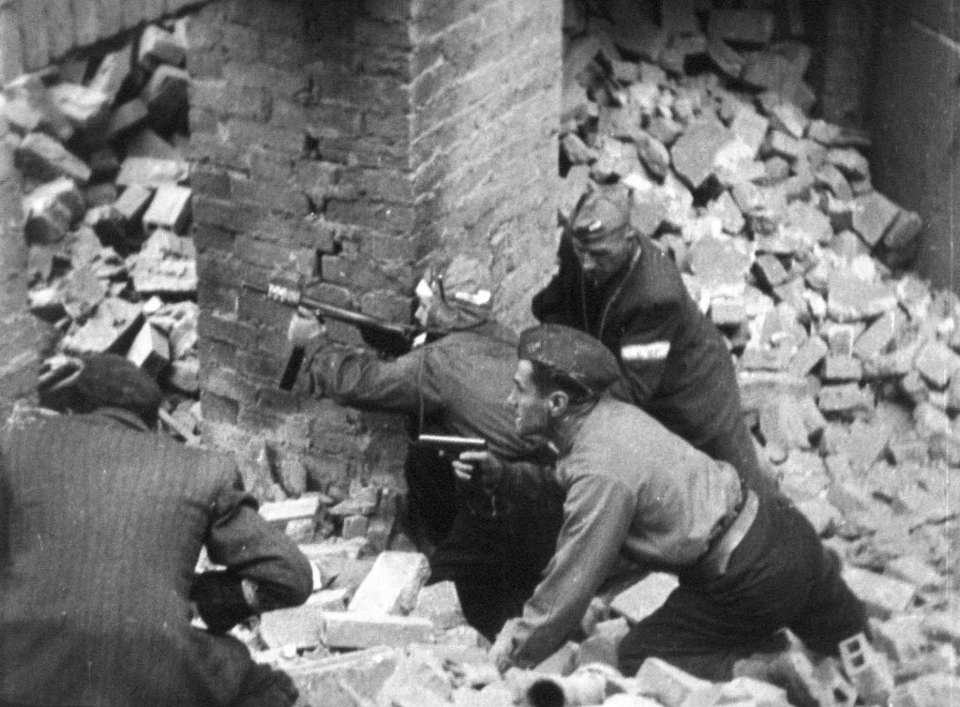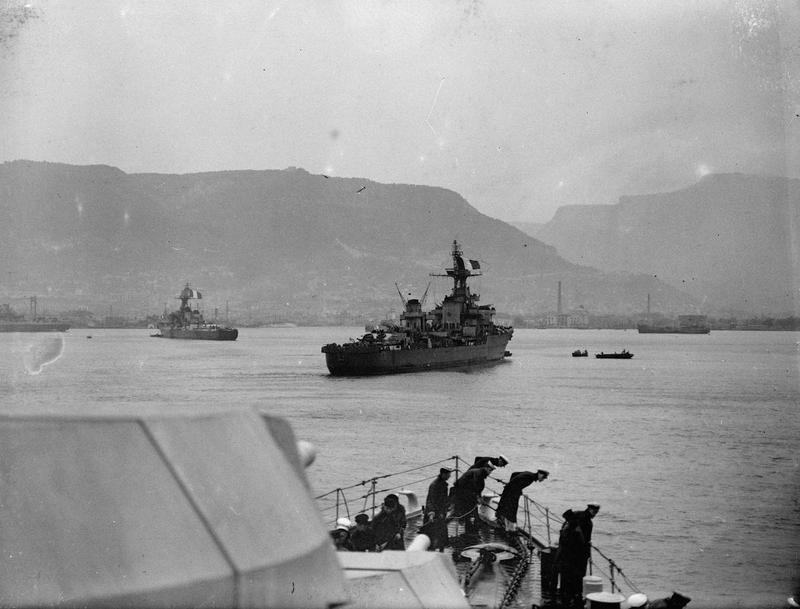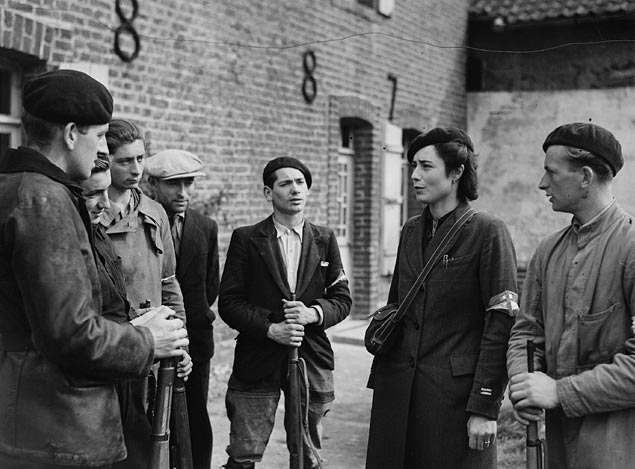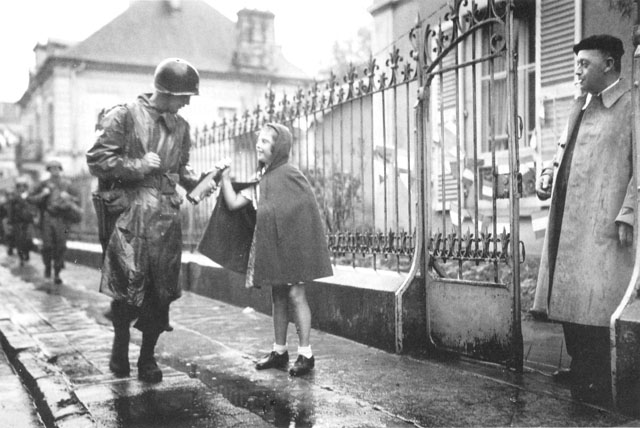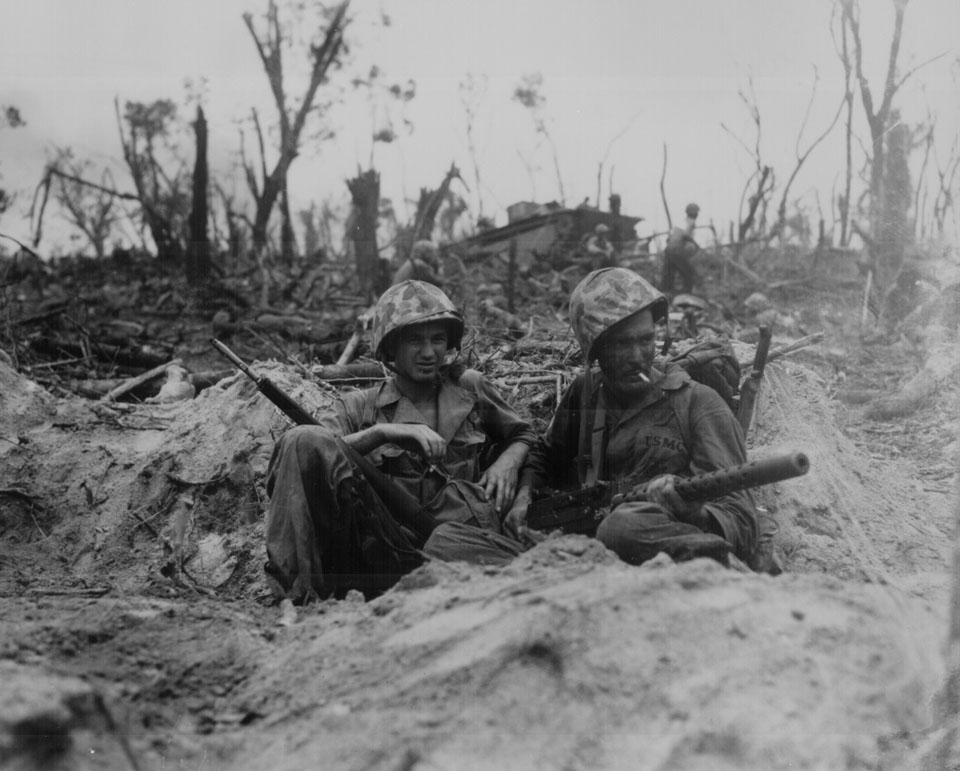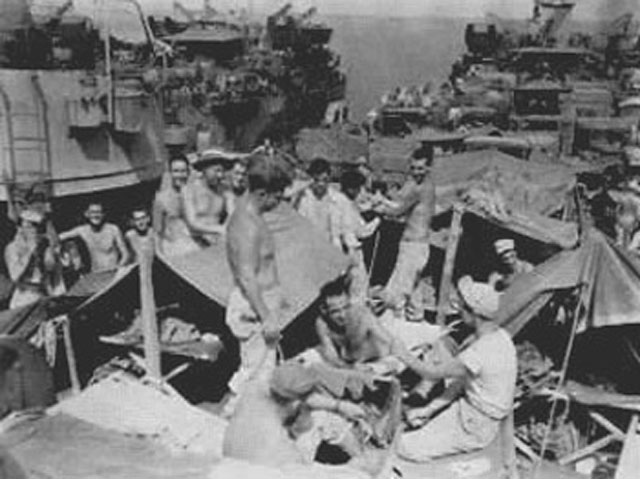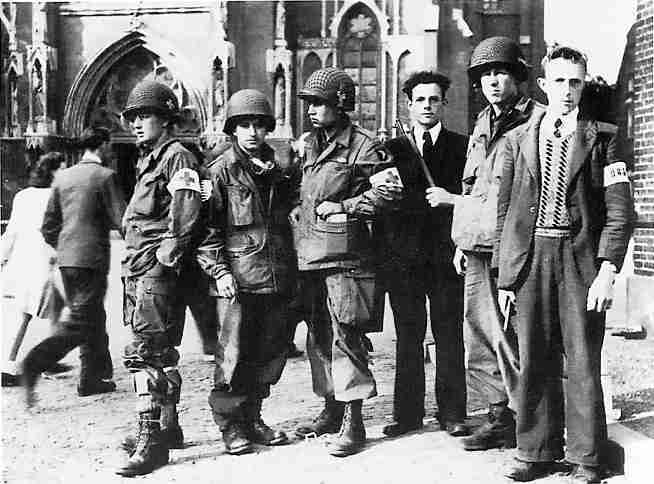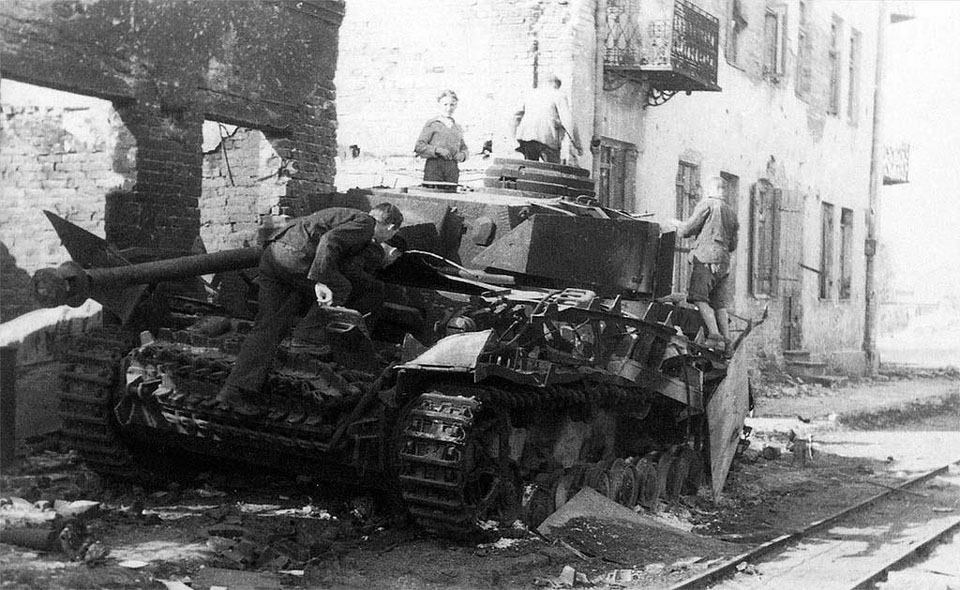Air Operations, Carolines
- 11th Heavy Bomb Group B-24s based in the Marshall Islands attack the Truk Atoll.
- During the night, 868th Heavy Bomb Squadron SB-24s mount their final attack against airfields and Japanese defenses in the Palau Islands.
Air Operations, CBI
BURMA- 4 10th Air Force B-25s attack Bhamo with fragmentation and booby-trap bombs.
- 6 341st Medium Bomb Group B-25s attack Tunganhsien.
- 91 14th Air Force P-40s and P-51s attack numerous targets across a wide area of east-central China and the Salween River front.
- 23rd Fighter Group P-51s down 2 Ki-44 'Tojo' fighters in a morning engagement near Sanshui.
Air Operations, East Indies
- FEAF B-24s attack 4 airfields on Halmahera.
- B-25s attack the Mapanget airfield on Celebes.
Air Operations, Europe
Germany is pounded by 5,000 Allied aircraft in raids on targets from the Siegfried Line to Berlin.
RAF BOMBER COMMANDDaylight Ops:
- 133 Halifaxes and 51 Lancasters of Nos. 4, 6 and 8 Groups are sent to Wilhelmshaven but are recalled while over the North Sea. No reason for the recall is in Bomber Command records.
- There are no losses.
- 35 Lancasters and 10 Mosquitos of Nos. 3 and 8 Groups bomb 'an ammunition dump' near The Hague at Wassenar. This site is possibly a suspected V-2 storage facility. The bombing is considered accurate but smoke and dust cover the target preventing the results being observed.
- There are 6 RCM sorties without a loss.
FRANCE:
- 144 IX Bomber Command B-26s and A-20s attack fortifications and gun emplacements around Brest.
ITALY:
- 12th Air Force B-25s and B-26s attack numerous tactical targets along the remaining portions of the Gothic Line.
- XII TAC fighter-bombers attack lines of communication in the Po River valley.
Air Operations, New Guinea
- V Bomber Command B-25s and A-20s attack the airfield at Babo.
- V Fighter Command fighter-bombers conduct numerous small attacks against airfields, anti-aircraft batteries, and targets of opportunity across the Vogelkop Peninsula.
Air Operations, Philippines
Virtually unopposed, US carrier aircraft from Task Force 38 continue to mount numerous attacks against targets throughout the central Philippines and Mindanao. In three days, US aircraft undertake more than 2,400 effective combat sorties, down an estimated 173 Japanese aircraft, destroy an estimated 305 Japanese aircraft on the ground, sink 59 ships, probably sink 58 other ships, destroy numerous ground tagets, and inflict serious casualties upon Japanese military personnel. US losses are 8 aircraft in combat, 1 airplane in an operational accident, and 10 pilots and aircrew killed.
[Air Operations, Volcano Islands
30th Heavy Bomb Group B-24s based at Saipan attack Iwo Jima.
[Burma-China
The Chinese complete the capture of Teng-chung, the town they first managed to enter on August 4. With the loss of Teng-chung and increasingly strong Chinese resistance in the Lung-ling sector, the Japanese break off their counter-offensive on the Salween front.
[CBI
Gen Joseph Stilwell flies from Burma to Kweilin to assess the situation. Chinese troops are nearly incapable of any sustained resistance. The Chinese Y Force captures Tengchung after more thant two months of bitter fighting.
[Eastern Front
The Warsaw suburb of Praga is taken by Soviet troops of the 1st Belorussian Front. There is no real attempt to cross the Narew or the Vistula, strongly defended by the Germans, or to break into the city proper to aid the AK.
NORTHERN SECTORThe Soviet Baltic Offensive begins, against the German 16th and 18th Armies between Riga and Narva. The formations involved are the Leningrad Front (2nd Shock, 8th and 59th Armies) - 195,000 troops; 1st Baltic Front (2nd Guards, 4th Shock, 6th Guards, 39th, 43rd and 51st Armies) - 621,000 troops; 2nd Baltic Front (3rd Shock, 10th Guards and 22nd Armies) - 339,000 troops; and 3rd Baltic Front (1st Shock, 42nd, 54th and 67th Armies) - 345,000 troops. The Germans can muster 400,000 troops.
Supported by heavy arty fire and air attacks, the 43rd Army at the center of the thrust by the 1st Baltic Front pushes north around Jelgava. However, the Germans have established strong defenses with just such an attack in mind and bogs the Soviet attacks down.
CENTRAL SECTORAlthough the Soviet 47th Army has cleared Praga, the 25th Panzer Div is pummelling the Home Army in kZoliborz and Czernaikow.
[Italy
With the capture of Zollara the Gemmano Ridge is finally cleared of German forces and the 8th Army is able to push forward to the Marano River, which is crossed by several patrols. In the western sector the American 5th Army continues to pound the defenses of the 'Gothic' Line.
[Pacific
The Japanese transport No. 5 is sunk by US carrier-based aircraft in the Philippine Islands area.
[Western Front
Field-Marshal Montgomery issues instructions for the British 2nd Army's offensive toward the Rhine and the Meuse, Operation MARKET GARDEN, and for a possible attack by the Canadian 1st Army to liberate the port of Antwerp and capture Boulogne and Calais. US forces and Dutch Resistance capture Maastricht.
The newly appointed commander of German forces in the west, Field Marshal Gerd von Rundstedt, tells Hitler 'the Battle for the West Wall' has begun. The West Wall (or Siegfried Line) had been largely dismantled since 1940, but it still represented a formidable barrier between the Allies and the Rhine River.
[Images from September 14, 1944
|
|
|
|
|
|
|
|
